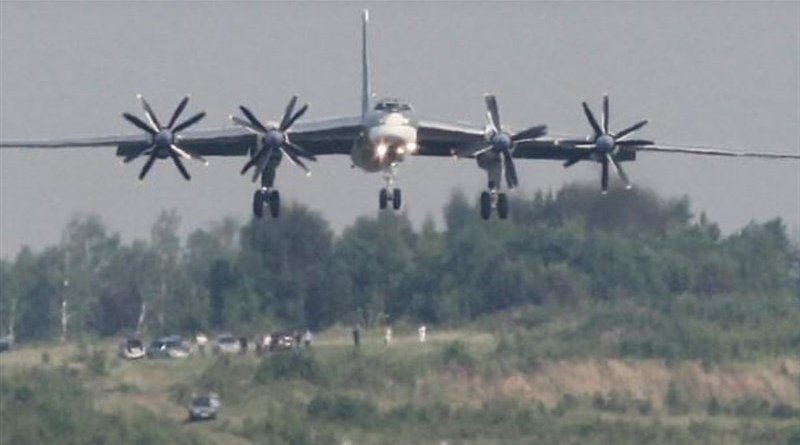Russia-China ‘Jointness’ A Major Geostrategic Concern – Analysis
The concept of “jointness” allows organizations to work together as one, as a team. In a military sense, this is a necessary step to create interoperability and synergies to augment force and its projection. Jointness can be and is a force multiplier. Markers concerning the cooperation between Russia and China help to determine the strategic and tactical interests of both countries in terms of this emerging idea of jointness between them.
Even though those who argue that Moscow and Beijing are incompatible in the long run may be correct, right now all eyes should be on two major markers of coordination, cooperation and their ramifications: The joint Russian-Chinese bomber penetration of South Korean air space and the release of the Chinese white paper on defense and security strategy.
Both events are markers about not only challenging the US’ view of Pacific theater issues, but also where both countries can move or already have their military assets for future scenarios involving ports, airspace and, ultimately, sovereignty.
The joint Russia-China nuclear bombers, two Russian Tu-95 bombers and two Chinese H-6 warplanes, violated South Korea’s air defense identification zone on Tuesday, becoming the first foreign military planes to enter South Korean airspace since the Korean War in the early 1950s. Eighteen South Korean fighters fired 360 machine gun rounds and released flares at a Russian A-50 early warning jet. The Russian A-50 entry point was a highly sensitive area and it flew over a strategic piece of property, Dokdo Island. Dokdo is claimed by both South Korea and Japan but administered by Seoul in what may be interpreted as a clear message about sovereignty in Northeast Asia. The aircraft’s mission was to capture the response of the South Korean air system, while the joint Russia-China bomber force flew through Korea’s maritime exclusion zone.
The episode signals that the joint maritime exercises Russia has been conducting with China over the past few years are now moving into strategic bombers and other jet fighters.
The next day, China released a new defense white paper, the first since 2015. China’s white papers are a promulgation of Beijing’s strategic and defense doctrine. In this new white paper, China accused the US of undermining regional stability by strengthening its alliances, and sharpened a warning that Beijing would use force, if necessary, to prevent Taiwan from declaring independence.
This type of language is similar to Moscow’s view of the Pacific region and shows that their relationship is not one of convenience but of necessity. To be sure, a Chinese defense official said that the air exercise was aimed at “upgrading joint operation capacity” between China and Russia. Chinese defense officials described Moscow and Beijing’s “core interests” in terms of partnerships.
The maritime security component is important. China acknowledged that the People’s Liberation Army was developing what it calls overseas logistical facilities to address “deficiencies in overseas operations and support.” China opened its first military outpost beyond its borders in 2017, and may soon be opening another in Cambodia, as the two countries are already working together on military training and logistics support. The spread of Chinese ports augments Beijing’s naval projection, which Russia can partner with in cases where both countries’ interests are at stake. Both have expanded their ports access around the globe.
Importantly, Russia and China are modernizing their naval power and projecting their naval and maritime interests in new ways. The two countries have announced a further opening of the Arctic sea route in terms of trade and security; they conduct joint maritime exercises in the Pacific that involve the sharing of naval strategy; they are both present in the Mediterranean and beyond; and are also involved in anti-piracy operations.
Russian and Chinese naval expansion appears to be assertive and, with growing cooperation on a host of security issues across Eurasia, Latin America and Africa, the two countries may find themselves more closely joined than they appear. This week’s incident in South Korean airspace illustrates that there is indeed a growing tactical relationship between Moscow and Beijing. This and the white paper are significant markers of military-to-military cooperation.
No doubt, the ability for both countries to practice new forms of jointness is becoming increasingly evident in terms of strategic thinking and now in practice. Together these countries appear to be conducting more cross-service cooperation in various stages of the military process, from research through procurement and into exercises and operations. If Russia and China begin more joint operations, then the implications for US and European security strategies will shift dramatically, based on their respective domestic considerations.
If both Russia and China see that disrupting, harassing and violating airspace in a joint manner offers increasing strategic and tactical value, they will continue to do so across a number of military domains in the short term.

